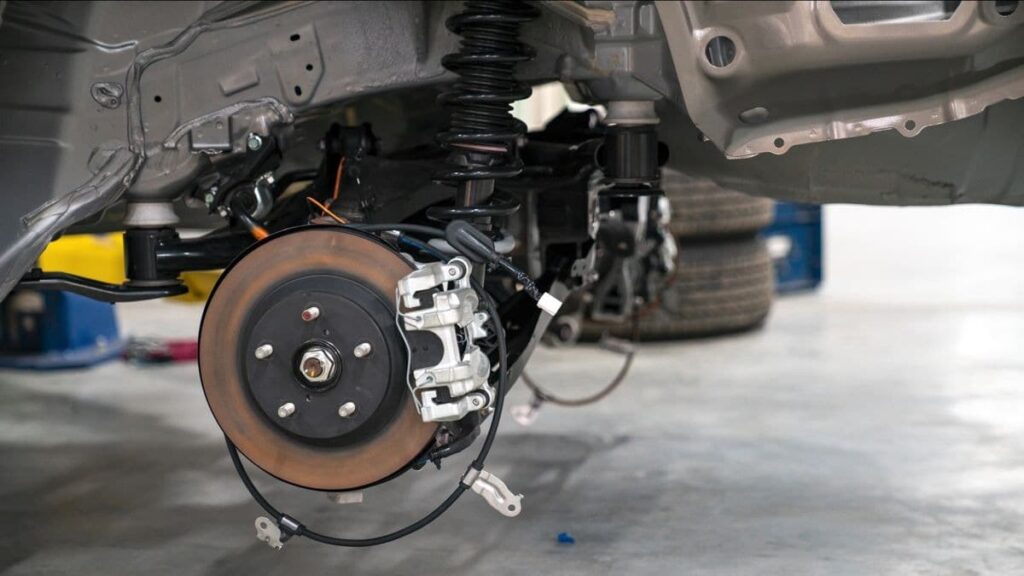Table of Contents
- Introduction to reasons why car shakes when turned on
- Possible causes of a car shaking when turning on:
- How to diagnose the cause of the shaking:
- How to fix the shaking:
- Conclusion: Ensuring the Safety and Proper Functioning of Your Car
- Frequently Asked Questions about the reasons why the car shakes when turned on.
Home » Why Your Car Shakes When Turning On
Introduction to reasons why car shakes when turned on
If you’ve ever experienced your car shakes when turning on, you know just how unsettling and concerning it can be. Not only is it a potentially dangerous driving condition, but it can also be a sign of underlying issues with your vehicle. The good news is that you can identify the cause of a car shaking when turning and resolve it, whether through simple repairs or adjustments or more extensive work.
It’s important to address the cause of a shaking car as soon as possible, not only for your safety but also to prevent further damage to your vehicle. A shaking car could result from worn or damaged components, such as suspension or tires, or it could be a sign of more serious issues, such as an engine misfire or transmission problems.
In this article, we’ll explore the causes of a car shaking when turning on, as well as how to diagnose and fix the issue. Whether you’re comfortable tackling the problem or prefer to leave it to the professionals, we’ve covered you. By the end of this article, you’ll better understand why your car is shaking when turning on and what steps you can take to resolve the issue.
Possible causes of a car shaking when turning on:
Loose or worn suspension components

A car’s suspension system is responsible for absorbing shock and keeping the car stable while driving. If any of the suspension system’s components are loose or worn, it can cause the car to shake or vibrate when turned on. Common suspension components that can cause shaking include sway bar links, strut mount bearings, and control arm bushings. If you suspect the shaking is related to the suspension system, you can try inspecting the components yourself or having a mechanic look.
Worn or damaged tires
Worn or damaged tires can also cause a car to shake when turning on. If you have worn threads, it can cause the car to lose traction and shake. Similarly, if you have damaged tires, such as from hitting a pothole or curb, it can cause the car to vibrate or shake when driving. To check the condition of your tires, you can use a tread depth gauge or do the “penny test” by inserting a penny into the tread. If the tread does not reach the top of Lincoln’s head, it’s time to replace the tires.
Faulty steering system
If shaking occurs when turning the steering wheel, it could be a sign of a problem with the steering system. Worn or damaged steering components, such as the steering rack or tie rod ends, can cause the car to shake or vibrate when turning. To diagnose steering issues, try inspecting the components yourself or having a mechanic take a look.
Engine misfire or malfunction
An engine misfire or malfunction can also cause a car to shake when turning on. If the engine is not running smoothly, it can cause the car to vibrate or shake. Various issues, such as a faulty spark plug, a damaged fuel injector, or a malfunctioning sensor can cause this. You’ll need to use diagnostic tools or consult a mechanic to diagnose engine issues.
Transmission issues
If the shaking only occurs when the car is in gear, it could be a sign of a problem with the transmission. A faulty transmission can cause the car to shake or vibrate when driving, especially when shifting gears. To diagnose transmission issues, you’ll need to have the car inspected by a professional mechanic.
How to diagnose the cause of the shaking:
Check the condition of the tires and suspension components
To check the condition of your tires, you can use a tread depth gauge or the “penny test” to determine if your tire have a worn down thread. If the tread is worn or the tires are damaged, it could cause the shaking. To check the condition of the suspension components, you’ll need to inspect them visually for signs of wear or damage. Common components to check include sway bar links, strut mount bearings, and control arm bushings. If you’re not comfortable inspecting these components, you can have a mechanic look.
Inspect the steering system for signs of wear or damage
If the shaking occurs when turning the steering wheel, it could be a sign of a problem with the steering system. To diagnose steering issues, you can inspect the components yourself or have a mechanic take a look. Common components to check include the steering rack and tie rod ends.
Check for engine misfires or malfunctions
To diagnose engine issues, you’ll need to use diagnostic tools or consult a mechanic. They will be able to check for misfires or malfunctions and determine the cause of the problem.
Have the transmission checked by a professional: If the shaking only occurs when the car is in gear, it could be a sign of a problem with the transmission. To diagnose transmission issues, you’ll need to have the car inspected by a professional mechanic. They can determine the cause of the problem and recommend any necessary repairs or adjustments.
How to fix the shaking:
Replace worn or damaged suspension components If loose or worn ones cause the shaking, you’ll need to replace them to fix the issue. Someone can typically do this at a mechanic’s shop, or if you’re comfortable doing the work yourself, you can purchase the necessary components and replace them.
Replace worn or damaged tires
If worn or damaged tires cause the shaking, you’ll need to replace them to fix the issue. You can purchase new tires at a tire shop or online and have them installed by a professional. Alternatively, if you’re comfortable doing the work, you can purchase the tires and install them yourself.
Repair or replace faulty steering components
If a problem with the steering system causes the shaking, you’ll need to repair or replace the faulty components to fix the issue. This can typically be done at a mechanic’s shop, or if you’re comfortable doing the work yourself, you can purchase the necessary components and replace them.
Address engine misfires or malfunctions
If an engine misfire or malfunction causes the shaking, you’ll need to address the issue to fix the problem. This may involve repairs or adjustments to the engine, such as replacing a faulty spark plug or repairing a damaged fuel injector. Alternatively, a mechanic can diagnose and fix the issue for you.
Have any necessary transmission repairs or adjustments made by a professional: If a problem with the transmission causes the shaking, you’ll need to have any necessary repairs or adjustments made by a professional. They will be able to determine the cause of the issue and recommend the appropriate course of action.
Conclusion: Ensuring the Safety and Proper Functioning of Your Car
If your car is shaking when turning on, it’s important to identify and address the cause of the issue as soon as possible. A shaking car can be a potentially dangerous driving condition and a sign of underlying issues with your vehicle. By taking the time to diagnose and fix the problem, you can ensure your car’s safety and proper functioning.
In this article, we’ve explored some of the possible causes of a car shaking when turning on, as well as how to diagnose and fix the issue. Whether you’re comfortable tackling the problem yourself or prefer to leave it to the professionals, there are steps you can take to resolve the issue. By following the tips in this article, you’ll be well on solving the mystery of why your car is shaking when turning on.
Frequently Asked Questions about the reasons why the car shakes when turned on
What are some common causes of a car shaking when turning on?
Some common causes of a car shaking when turning on include loose or worn suspension components, worn or damaged tires, faulty steering system components, engine misfires or malfunctions, and transmission issues.
How can I diagnose the cause of the shaking?
To diagnose the cause of a car shaking when turning on, you can start by checking the condition of the tires and suspension components. If these appear in good condition, you can inspect the steering system and check for engine misfires or malfunctions.
How do I fix the shaking?
The steps you’ll need to take to fix the shaking will depend on the cause of the problem. When loose or worn suspension components cause the shaking, you’ll need to replace them. If worn or damaged tires cause it, you’ll need to replace them tires. When the problem is with the steering system causes it, you’ll need to repair or replace the faulty components. If an engine misfire or malfunction causes it, you’ll need to address the issue through repairs or adjustments. If a problem with the transmission causes it, you’ll need to have any necessary repairs or adjustments made by a professional.
Can shake when turning on be a sign of a serious issue with my car?
Yes, shaking when turning on can signal a serious issue with your car. It’s important to identify and address the cause of the shaking as soon as possible to prevent further damage to your vehicle and ensure the safety of your driving. If you cannot diagnose the cause of the shaking or are unsure how to fix it, it’s best to consult a professional mechanic for assistance.


